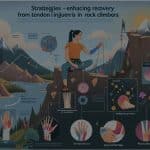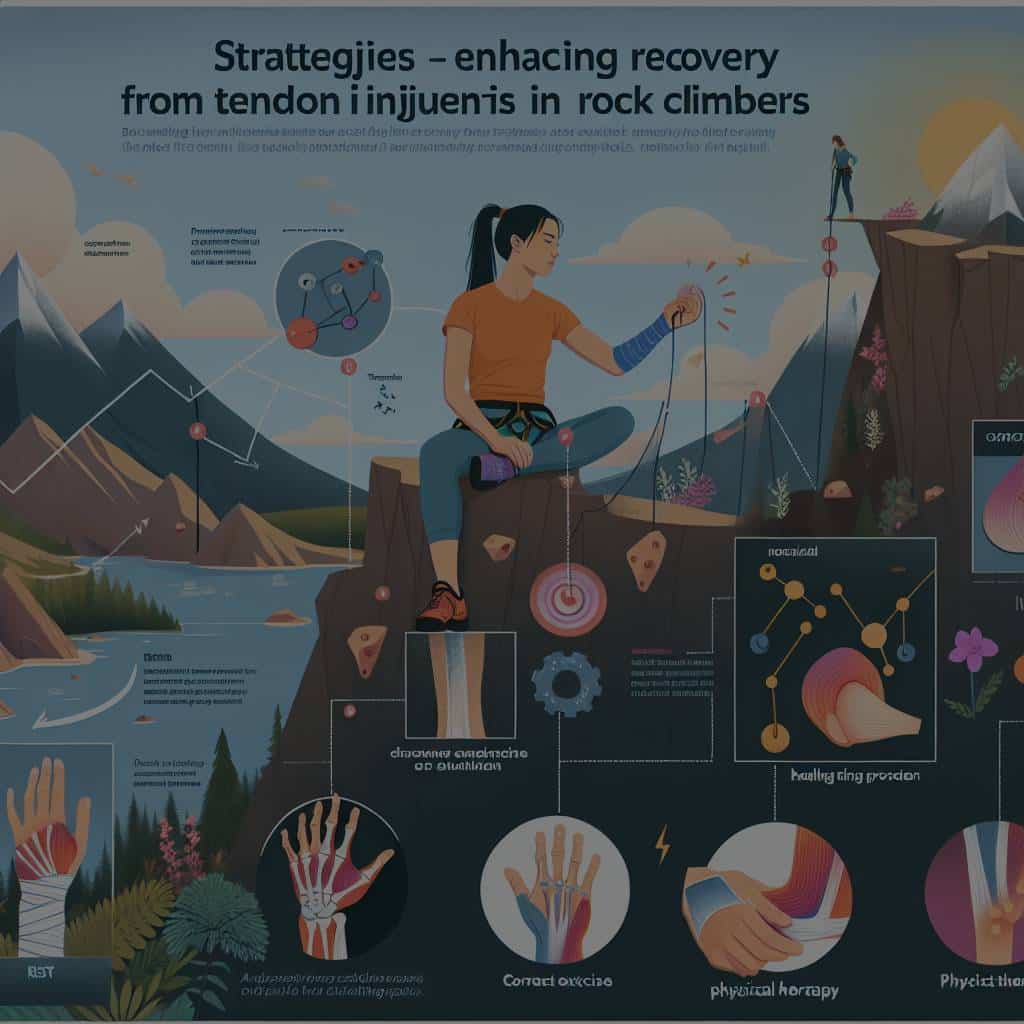For rock climbers, every grip, hold and movement requires strength and precision. The hand and tendons are immensely important in this sport and can easily suffer injuries if not properly cared for. Rock climbing can result in injuries to the finger, hand, and pulley tendons, which are often prevalent among both amateur and professional climbers. The recovery process for these injuries is crucial, and knowing the best strategies to enhance recovery can make all the difference. With input from the medical scholar and information from credible sources such as PubMed, let’s explore these strategies in detail.
Optimizing Training
Before we venture into recovery strategies, it’s essential to understand that prevention is better than cure. Training in the correct manner reduces the risk of injury and optimizes your climbing performance. Climbing requires a balance of muscle strength and endurance, as well as flexibility and mental resilience. Your training should reflect this.
Also read : What Are the Advanced Scouting Methods for Identifying Talent in College Basketball?
Adopting a holistic approach to your training regimen that includes strength training, endurance training, flexibility exercises, and mental preparation will significantly reduce your chances of injury. High-intensity interval training for cardiovascular fitness, weightlifting for strength, yoga for flexibility, and mindfulness exercises for mental resilience form the ideal training regimen for climbers.
For finger strength specifically, fingerboard training can be incredibly beneficial. But remember, it’s crucial to gradually increase the intensity of these exercises to avoid injury. Overtraining can lead to tendon injuries, so ensure you maintain a balance between training and rest.
Also to discover : How Can Heart Rate Monitors Guide Training Intensity for Marathon Kayakers?
Understanding and Identifying Climbing Injuries
To recover effectively from any injury, it’s essential to understand what type of injury you’re dealing with. In the case of rock climbers, the most common injuries are to the finger and hand. According to PubMed, these include tendon injuries, ligament injuries, and pulley injuries. These injuries often result from overuse, or from sudden intense stress on the hand or finger such as in a fall or an awkward grip.
Identifying the injury is the first step towards recovery. Symptoms of these injuries include pain, swelling, and decreased strength or range of motion. If you experience these symptoms, it’s important to see a medical professional for a proper diagnosis. They can perform tests and scans to identify the type and severity of the injury, and advise you on the best course of recovery.
Strategies for Tissue Recovery
Once you’ve identified the injury, the real work of recovery begins. The first stage of recovery from a tendon injury is to reduce inflammation and pain. This can be achieved through rest, ice, compression, and elevation (RICE). Non-steroidal anti-inflammatory drugs (NSAIDs) can also be used to help reduce pain and inflammation.
Physical therapy is another essential component of recovery. Therapists use techniques such as massage, mobilization, and guided exercises to help restore function and strength to the injured area. They can also provide advice on how to modify your climbing technique to avoid re-injury.
In some cases, more severe injuries may require surgical intervention. This is typically reserved for cases where the tendon is completely torn, or where other treatments have failed to provide sufficient relief.
Strength Conditioning and Taping Techniques
In addition to physical therapy, strength conditioning is highly beneficial for recovering climbers. It helps build muscle around the affected area, providing more support and reducing the chance of re-injury. These exercises should be tailored to your specific injury and overall physical condition. A physical therapist or trainer with experience in climbing injuries can provide the best guidance here.
Taping is another technique that can aid recovery. Taping provides support to the injured area, reducing strain on the tendons and allowing them to heal. Various taping techniques can be used, depending on the type of injury.
Integrating Recovery into Your Climbing Routine
The final step in the recovery process is to integrate your recovery strategies into your routine. This means continuing with your physical therapy exercises and strength conditioning, even after you’ve returned to climbing. It also means continuing to monitor your injury for any signs of re-injury or strain.
In addition, you should look at how you can adjust your climbing technique to prevent future injuries. This might involve changing your grip, using different climbing routes, or using different equipment. This process of continued recovery and prevention will help keep you on the wall, and away from the doctor’s office.
Remember, each injury and recovery process is unique. What works for one climber may not work for another. But by understanding your injury, seeking professional advice, and taking a proactive approach to your recovery, you can navigate your way back to climbing with strength and confidence.
Collagen Synthesis and Nutrition
Understanding the role of nutrition in tendon recovery is vital. One keyword in this context is collagen synthesis. Collagen is the primary protein found in tendons, and its synthesis plays a crucial role in tendon repair and strength. A study on supercharged collagen published in PubMed suggests that specific nutritional interventions can boost collagen synthesis, aiding in quicker recovery from tendon injuries.
Increasing the intake of Vitamin C, which directly influences collagen synthesis, is beneficial. Consuming a balanced diet with adequate protein, especially rich in amino acids like glycine and proline, which are the building blocks of collagen, can also promote tendon healing. Hydration is equally important as water contributes to the health and repair of tendons.
Moreover, certain nutrients, when consumed before exercise, may enhance collagen synthesis. These include gelatin or hydrolyzed collagen supplements. As part of your routine, consider consuming a serving of these about an hour before your finger strength exercises or climbing activities to support recovery.
However, it is always advisable to consult with a sports medicine professional or a nutritionist for personalized advice based on your specific needs and injury status.
Psychological Aspects of Recovery
The mental aspect of recovery is just as important as the physical, but it’s often overlooked. Climbers recovering from a pulley injury or similar tendon damage must arm themselves with mental resilience to effectively navigate the healing process.
Studies in sports medicine highlight the psychological impact of sustained injuries on athletes, and rock climbers are no exception. Feelings of frustration, denial, anxiety, and even depression are common. Therefore, implementing mental health strategies into your recovery program can be enormously beneficial.
Mindfulness exercises and meditation can help manage stress and anxiety, improving your overall mental wellbeing and mindset during recovery. Techniques such as progressive relaxation, guided imagery, and cognitive-behavioral strategies can help manage pain and develop coping mechanisms.
Moreover, remaining part of the climbing community, even when injured, can help maintain morale. Engaging in discussions, sharing experiences with other climbers, or simply watching others climb can keep your passion alive and motivation high.
Conclusion
Recovery from tendon injuries in rock climbers is a multi-faceted process, requiring a careful blend of physical rehabilitation and mental resilience. From optimizing training to integrating recovery into the climbing routine, each step is crucial in ensuring a successful return to the sport.
Strategies such as enhancing collagen synthesis through nutrition, practising appropriate taping techniques, and building finger strength through targeted exercises all contribute to an efficient recovery. Incorporating psychological strategies can also aid in managing the mental challenges posed by injury.
Remember, the recovery journey is unique for each individual and is best guided by medical professionals. The resources available, from the comprehensive free article databases of PubMed and Google Scholar to the advice of sports medicine experts, can provide valuable information and support.
Finally, while recovery is crucial, so is injury prevention. Investing time in proper training, using the right equipment, and listening to your body can significantly reduce the risk of tendon injuries. After all, being able to enjoy rock climbing safely and sustainably is the ultimate goal.











